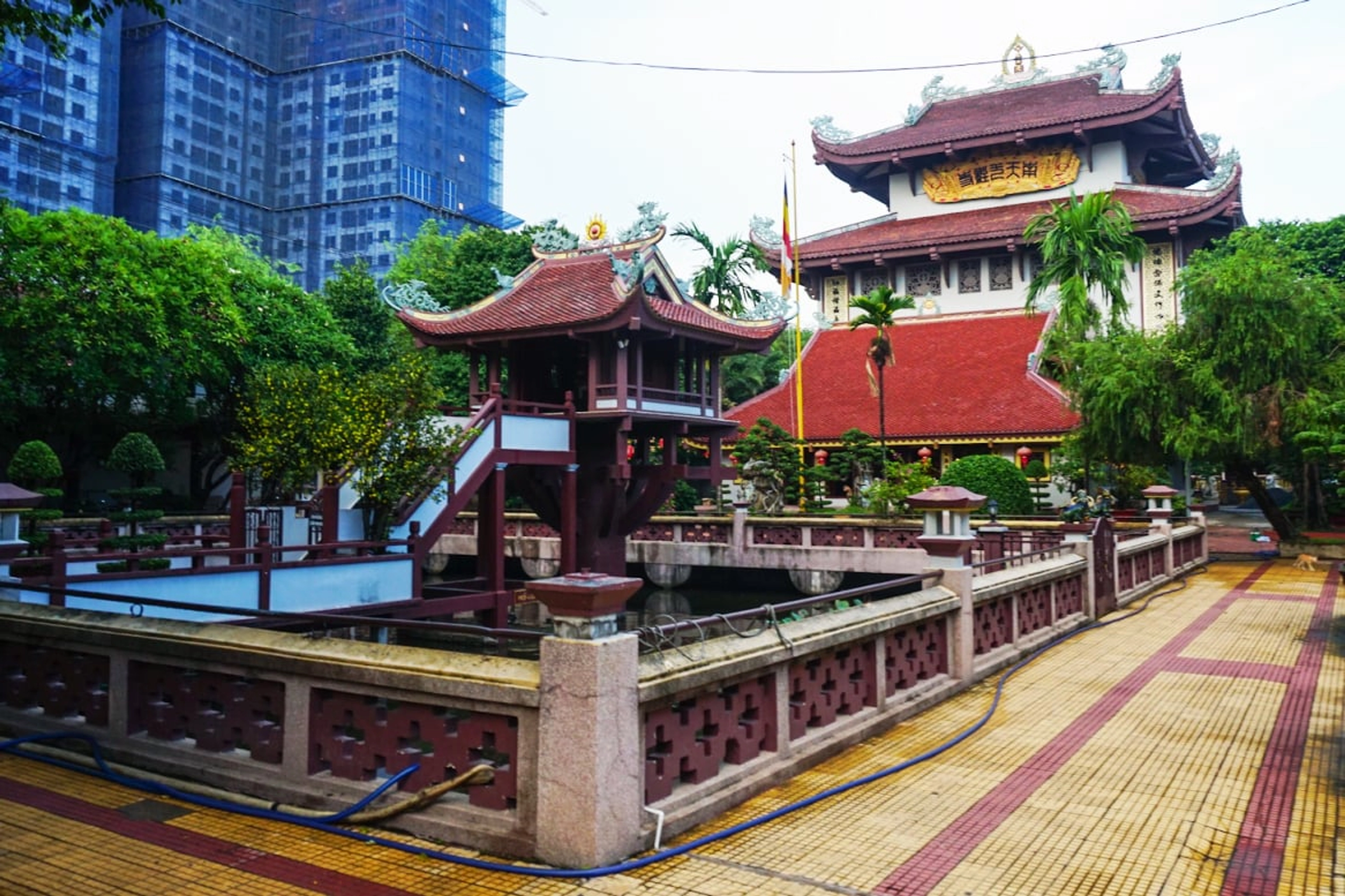

Did you know that in Ho Chi Minh City there's a pagoda exactly like the One Pillar Pagoda in Hanoi? Join BDATrip as we explore the history, architecture, and nearby dining spots of the One Pillar Pagoda in Thu Duc through this article!
Located at No. 1, Street No. 1, Linh Chieu Ward of Thu Duc City, Ho Chi Minh, the One Pillar Pagoda in Thu Duc is an attractive spiritual destination about 15km away from the city center. Visitors can easily choose various means of transportation such as motorcycles, cars, buses, or taxis to visit.
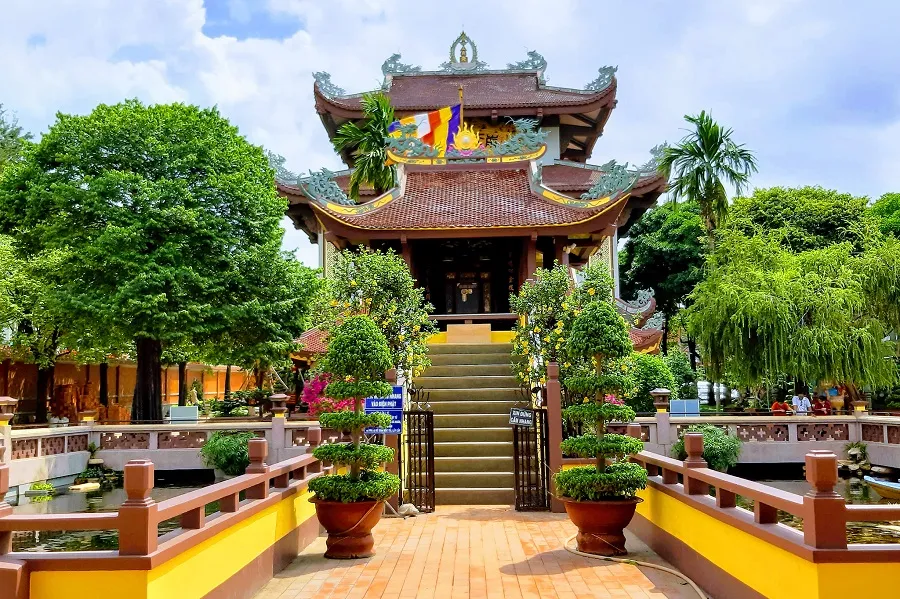
To reach the One Pillar Pagoda in Thu Duc, visitors can choose one of the following routes, depending on their starting point:
- From District 1: Start your journey on Nguyen Thi Minh Khai street, then turn right onto Dien Bien Phu and continue to turn left onto Pham Van Dong. Next, go straight to Binh Trieu junction, turn right onto Street No. 9, and finally turn left onto Street No. 1, where the pagoda welcomes you on the right.
- From District 9: Start from Le Van Viet, turn left onto Vo Chi Cong, then turn right onto Street No. 9. Continue your journey by turning right again onto Street No. 1, and you will see the pagoda on your left.
- From Thu Duc District: Follow National Highway 13, turn right onto Pham Van Dong and then turn left onto Street No. 9. When you turn left onto Street No. 1, the pagoda opens its doors to welcome you on the right.
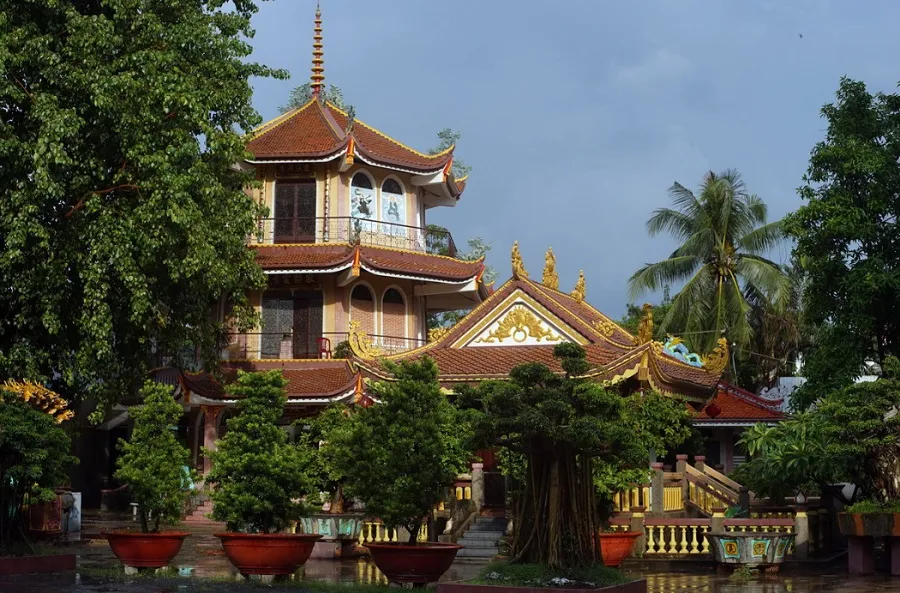
Commencing in 2010 under the dedication and vision of Thich Tam Vien, the One Pillar Pagoda in Thu Duc is a focal point of reverence and creativity. Inspired by the legendary One Pillar Pagoda in Hanoi, this pagoda is not only a symbol of deep gratitude to the Hanoi father by the monk but also a prime space for meditation and spreading Buddhist teachings. At the same time, it becomes a rich cultural destination for both locals and tourists from everywhere.
Built on a large plot of 3000m² with an estimated budget of 15 billion VND, the architecture of pagoda reflects the refinement and uniqueness of traditional Vietnamese style. The vivid red tiled roof, sturdy wooden columns, and culturally rich decorative motifs create a harmonious, serene beauty. A 12-meter high concrete pillar supports the quaint pagoda with an area of only 36m², housing a bronze statue of Quan Am Bodhisattva, 1.2 meters tall and weighing 300kg, symbolizing compassion and protection. The exterior space of the pagoda includes a 1000m² water pond, creating a peaceful natural scene with surrounding trees and lotus flowers.
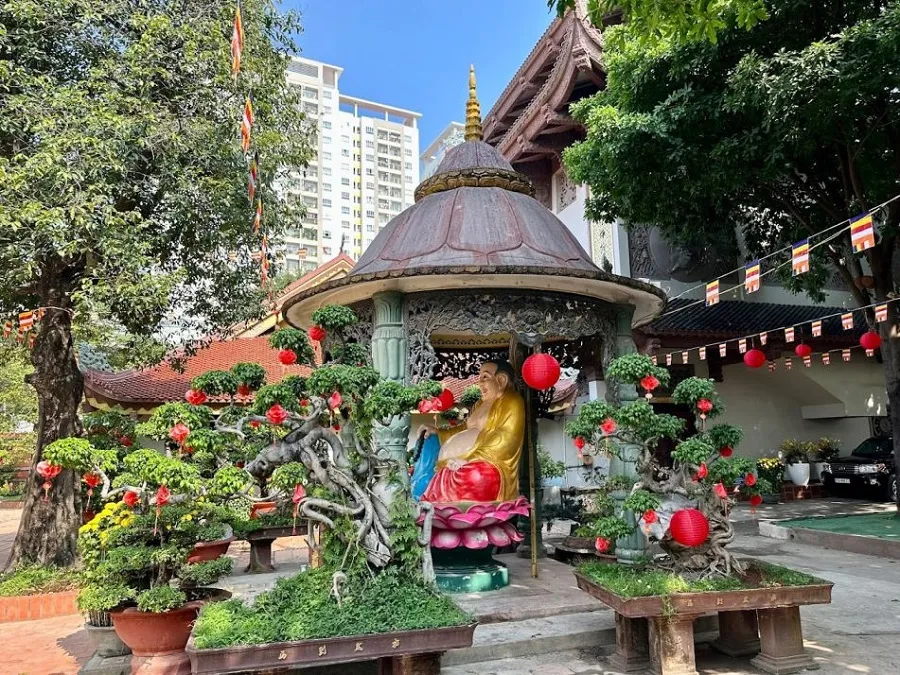
On November 19, 2010, on the occasion of Buddha's birthday, the pagoda was officially inaugurated, bearing the name Dao Trang Nam Thien Nhat Tru, meaning "One Pillar of the South." The pagoda is not only seen as a spiritual replica of the One Pillar Pagoda in Hanoi but also as a unique architectural symbol of Vietnam, attracting interest and admiration from many.
Inspired by the One Pillar Pagoda in Hanoi – an epic architectural symbol of Vietnam built during the reign of King Ly Thai Tong in 1049 – the One Pillar Pagoda in Thu Duc honors the rich historical and cultural values of the nation. The One Pillar Pagoda in Hanoi originated from the dream of King Ly Thai Tong, in which he saw Quan Am Bodhisattva on a lotus flower, symbolizing fertility, prosperity, and auspiciousness, foretelling the birth of his son. To commemorate this event, a pagoda was built on a wooden pillar, mimicking the sacred lotus flower image, dedicated to Quan Am Bodhisattva.
The One Pillar Pagoda in Hanoi is not only an architectural masterpiece but also a symbol of prosperity, durability, and wisdom, embodying the compassionate and enlightened spirit of Buddhism, providing spiritual support to many.
Meanwhile, pagoda although built on the same prototype and spirit, features its unique characteristics. This pagoda is erected on a concrete pillar instead of a wooden one, symbolizing solidity and durability over
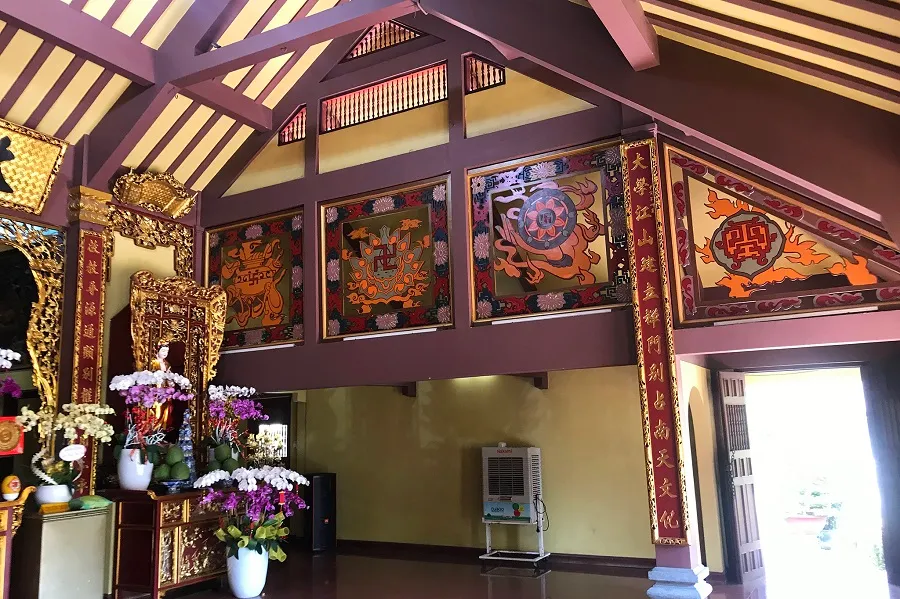
time. With a larger appearance, the pagoda is surrounded by a peaceful water pond, creating a harmonious landscape with nature, greenery, and lotus flowers around it. In addition, the temple premises include a large hall, guest room, dining room, and bedrooms for monks, providing a fully equipped, serene living and practicing space.
The One Pillar Pagoda in Thu Duc is not merely a replica of the One Pillar Pagoda in Hanoi but also features its unique highlights, making the temple distinctive and attractive. Notably, the Rainbow Bridge, an engineering masterpiece with a curving steel structure connecting the two sides of the pond, is 18 meters long, 1.2 meters wide, and 6 meters high. The vibrant colors on the bridge not only create a romantic landscape but also become an ideal photo spot for visitors, symbolizing connection and joy.
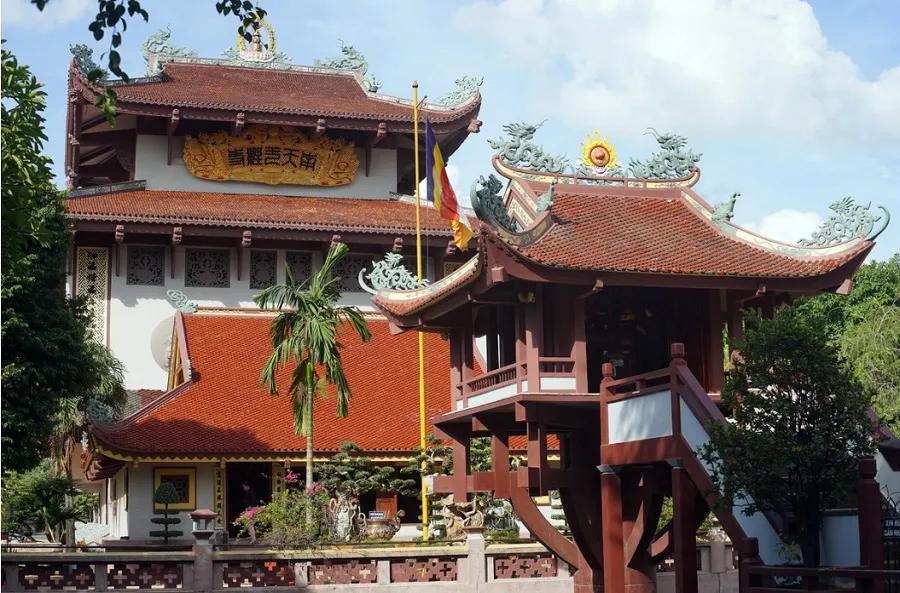
Moreover, the Fountain at the pagoda adds to the lively and cool ambiance. This system sprays high streams of water artistically with different rhythms and colorful lights, located in the middle of the pond and near the main pillar of the pagoda. The fountain's operation in the morning and evening not only refreshes the atmosphere but also provides an opportunity for visitors to enjoy unique performances, from music to dance and light effects, enriching the visiting experience.
After visiting and worshipping at the One Pillar Pagoda in Thu Duc, you can find several dining and relaxation spots nearby to recharge and enjoy delicious food. Following moments of tranquility and serenity at pagoda , discover ideal places around to relax and indulge in distinctive cuisine. Here are the top three suggestions:
- Ba Ghien Broken Rice: This place is not only famous among Ho Chi Minh City residents but also known to tourists far and wide for its authentic Southern-style broken rice. From fragrant rice, combined with tender marinated grilled ribs, crispy pork skin, steamed pork cake, and sunny-side-up eggs, each meal here is an unforgettable culinary experience. Located about 2km from the pagoda, the restaurant can be easily accessed by a short walk or a quick motorcycle ride.
- Cafe Gio: Situated right next to the cool waters of the pagoda, Cafe Gio is an ideal stop to relax and enjoy the peaceful atmosphere. With an open design, from comfortable seating to swing chairs, this cafe invites you to pause, immerse in nature, and enjoy cold drinks and sweet pastries offered here.
- Thu Duc Hotel: Located at No. 20 Street No. 9, Linh Chieu Ward, just about 1km away from the pagoda, Thu Duc Hotel offers visitors a convenient and 3-star quality accommodation option. From modern rooms equipped with amenities like air conditioning, TV, refrigerator, Wifi, to relaxation services such as restaurant, bar, swimming pool, and gym, the hotel is an ideal lodging point for all visitors after exploring the pagoda.
The One Pillar Pagoda in Thu Duc is a unique and beautiful temple, rich in architectural features and distinctive highlights. It's a must-visit destination when you come to Ho Chi Minh City.
Some spiritual tourist destinations in the city. Ho Chi Minh:
Copyright © 2022 BDATrip.com | All rights reserved.